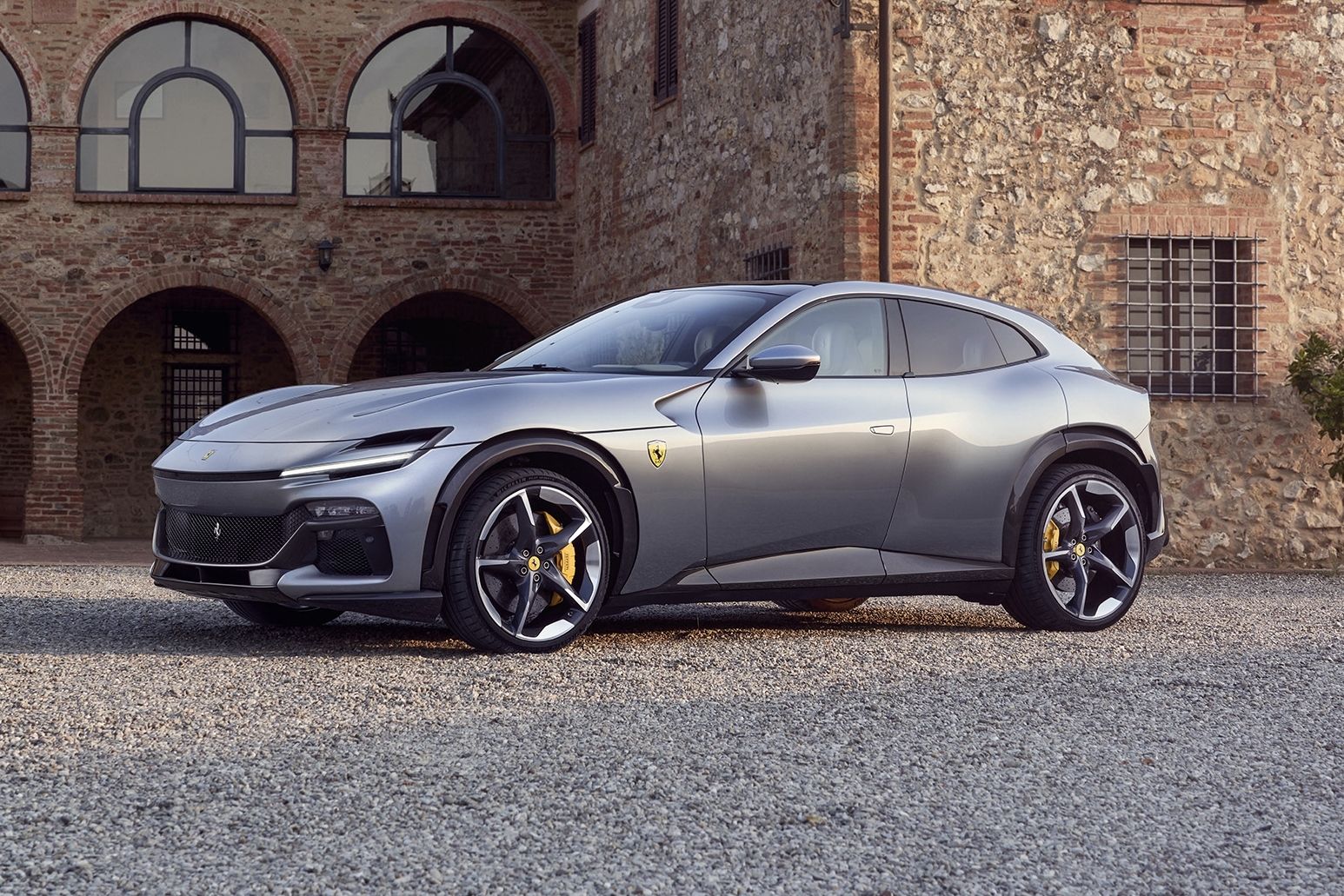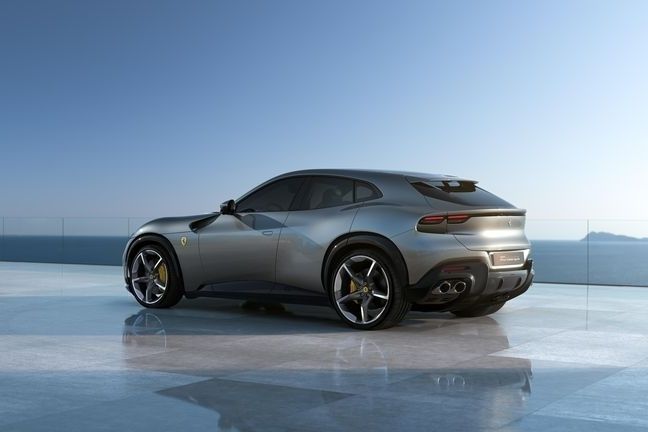
Rear-wheel steering has staged a big comeback recently, thanks to computing power and intensive hardware development advances. Ferrari also got in on the act with its Virtual Short Wheelbase used on the Purosangue, where the engineers saw enough potential to develop their system even further.
According to a new patent found by CarBuzz at the European Patent Office (EPO), a future Ferrari iteration of this system will involve individual rear wheel control, which will offer improvements in areas ranging from fuel consumption to tire wear. And, because we're talking about Ferrari here, it also promises further advances in driving dynamics.
The best bit is that Ferrari doesn't even need to develop new hardware to make it possible because this innovation simply adds an extra layer of software control to the hardware it already uses.
Current rear-wheel steering (RWS) systems are already quite sophisticated, with their computers capable of seamlessly transitioning between different operating requirements. At low speeds, such as the car would encounter in city driving or when parking, the rear wheels steer in the opposite direction to those in front. This reduces the vehicle's turning radius and thus makes it easier to maneuver in confined spaces.
At higher speeds, the RWS does the opposite of what it does at low speeds and steers the rear wheels in the same direction as the front wheels. This inhibits any tail-wagging antics in high-speed cornering or evasive maneuvers, keeping the car stable and pointing in the right direction. It also improves the off-road ability of a Purosangue in case anyone ever wants to take this super-SUV off the asphalt.
The one limitation with most current applications is that their rear wheels operate in tandem - one wheel copies the direction in which the other turns and the rear wheels remain largely parallel as they go through their ranges of steering action. Even though most RWS systems have separate actuators for each wheel, they're programmed to keep the rear wheels going through the same motions. Whether this is by design or due to computing limitations, it still isn't the optimal way to use the hardware.
Ferrari's new patent says this doesn't have to be the case. When turning the steering wheel in most driving conditions, this new RWS system works exactly like the established offering, doing the same-direction/opposite-direction dance as is the current fashion. The differences appear in its straight-line behavior, when accelerating, and right at the limits of mechanical grip in corners.
In a straight-line cruise, the Ferrari system applies some steering force to the rear wheels to point the wheels directly forward, overriding any toe settings that may be part of the car's standard wheel alignment settings. This reduces tire wear, and the resulting lower rolling resistance also boosts fuel efficiency by a small margin. As we know, every drop counts when it comes to EPA ratings.
The new RWS also comes into play under hard acceleration, where the onslaught of torque might make a powerful V12 Ferrari fishtail and possibly lose control. Stability- and traction control can manage that just fine, but the Ferrari RWS system also adds a few degrees of toe-in to the driven rear wheels (pointing them slightly inwards). This will significantly reduce fish-tailing tendencies and lessen the need for stability management systems to cut the power, apply the brakes, or shuffle torque from one drive wheel to the other.
In conjunction with Ferrari's clever electronic differential control, this will improve straight-line acceleration without the risk of sending the car backwards into the hedges.
Finally, Ferrari's new RWS will also be able to fine-tune the car's behavior at the limits of adhesion by steering the rear wheels in completely disparate directions, depending on the situation. This allows the control system to control the car's yaw movement (its tendency to rotate around its rotational axis), making for greater stability in corners, greater agility, and more forgiving behavior at the grip limits. Once again, this is accomplished without intervention from the e-differential or stability control systems, thus reducing interference with the car's natural dynamic balance.
Given that Ferrari has been working on other methods of retaining tactile feedback in the age of ever-increasing electronic interventions, it's encouraging to see them exploring purely mechanical methods of achieving their dynamic goals as well. Whether the future is gas-fueled, electric, or both, Ferrari is clearly focused on keeping the driver as intimately involved in the driving process as possible.

